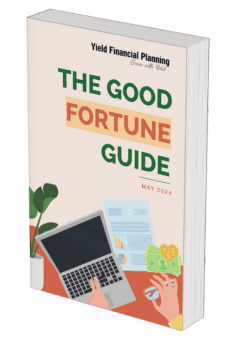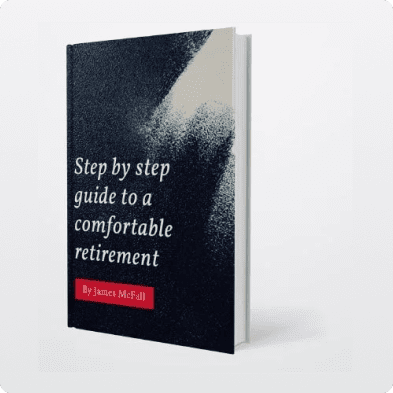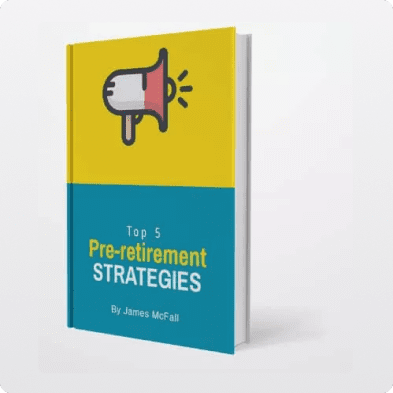One of the simplest ways you can begin preparing for retirement now, is to create a retirement planning checklist. Not only will it illustrate how you are tracking. But it will highlight opportunities to improve your financial position and how secure you feel too.
Throughout this blog, we show you what should be on your retirement checklist and how to go about completing one.
Retirement Planning Checklist – What to Include
- Assess your current financial situation
- Set clear retirement goals
- Calculate your retirement needs & do a budget
- Make the most of your superannuation
- Have a clear tax structuring plan
- Diversify your investments
- Pay off debts
- Consider long term health and life insurance
- Plan for government benefits
- Review and adjust your plan regularly
A retirement planning checklist is essentially a simplified financial plan. If you are seeking a comprehensive financial plan, tailored to you and the opportunities that exist for you, then you should speak to one of our retirement financial planning experts.
Assess Your Current Financial Situation:
Before you start your retirement planning journey, you must evaluate your current financial circumstances. A great way to start is to calculate your net worth.
I would recommend that you separate your lifestyle assets and financial assets for this. Because your lifestyle assets are less likely to contribute to your longer term financial income needs.
Apart from this, you don’t need to be too scientific at this stage. Just add up your assets (savings, investments, real estate, etc…) and then identify your financial liabilities (debts, mortgages, loans, etc…). Consider too what income your investments generate and monthly outgoings that are associated. This will help you see if you have a positive or negative cashflow.
By summarising your affairs this way, you will gain a baseline for how you currently stand financially.
Set Clear Retirement Goals:
Defining clear and realistic retirement goals, lays the foundation for a solid financial plan. Indeed your retirement planning checklist is all about supporting you to achieve what you want in life, so give this deep thought. When we speak to clients, we recommend thinking about what your best life looks like to begin, as ideally no compromise will need to be made. But if it is needed, then it is easier to prioritise once it is all laid out.
Consider your desired retirement age, lifestyle expectations, and activities you wish to engage in during retirement. Outline both short-term and long-term goals, such as funding a dream vacation or leaving a financial legacy for your loved ones. Setting objectives will serve as a roadmap to achieve the retirement lifestyle you envision.
Calculate Your Retirement Needs & Do a Budget:
To calculate your retirement income needs, it is usually best to start with a budget. This is often the best way, as it really gets you thinking about what retirement will cost.
We recommend breaking out the items that you ‘need’ and cannot do without, from the items that you ‘want’. This ensures you can always afford the essentials and can prioritise everything else. Based on what you can afford.
Consider essential expenses such as housing, food, transportation, and leisure activities. Additionally, consider potential healthcare costs and inflation to ensure your savings are sufficient to support you throughout your retirement years.
When you layer this together with what your retirement goals are, and price them, you will have a good ideal of your ideal retirement budget looks like.
Next identify all your anticipated sources of income. Think about your superannuation, investments, rental income, and potential government benefits. Income is not usually your only source of funds for retirement, but it will help identify any shortfall that needs covering.
Each year we write on how much you need to retire, which goes into further detail on this topic.
Make The Most of Your Superannuation:
Superannuation plays a central role in retirement planning in Australia and as financial advisors we can help you make the most of this incredible retirement structure.
To take full advantage of the tax benefits, consider consolidating multiple superannuation accounts to reduce fees and simplify your investments.
You should also explore the different super fund options that exist too. As each option has different benefits. For example there are simple solutions like industry super funds. Or more dynamic retail offerings or the Rolls Royce of super is self managed super (SMSF). SMSF offers the most flexibility and can also be the most cost effective for larger balances.
Once decided on the most appropriate super fund, review investment options within your superannuation fund. This should take into account your risk tolerance and retirement goals.
Next you want to help your super grow, so look at all the contributions options that you have. These include, concessional and non-concessional contributions. Co-contribution and spouse contribution. Catch up contributions and Downsizer contributions.
Superannuation is very flexible to withdraw from, so your retirement planning checklist should be strategic about how you get money in.
For most Australian’s, superannuation is the best tax structure for retirement. It is also purpose built to pay retirement income.
Have a Clear Tax Structuring Plan:
How you own your assets is a large determinant of how much tax you will pay. How much tax you pay, will influence how soon you can retire. Tax planning is therefore an essential part of your retirement planning checklist.
Tax structuring refers to the name you own your investments in. When you list your assets, consider which entity owns them. Is it you or your partner as individuals? Superannuation, family trusts or company structures for example? Each of these have different tax implications and it is important to be considerate of these.
For any future investments you are considering, it is ideal to choose a tax structure that suits you now and long term. This is one way financial advisors can really help you, as advice should keep your tax to a legal minimum and improve your retirement prospects.
Diversify Your Investments:
Diversification is an essential component of any successful wealth creation and retirement investment strategy. Moreover it is an important strategy to manage risk and optimise your returns.
When thinking about investing, consider investment options like cash, stocks, bonds, real estate or managed funds. By being thoughtful about your investment selection and diversifying, you will give yourself the opportunity to overcome potential roadblocks such us market volatility or economic fluctuation.
Financial planner can help you tailor your investments and implement a diversified strategy as part of your wealth creation journey.
Pay Off Debts:
If you have debt, list out your loans and the interest rates on each. Usually a retirement planning checklist objective is to prioritise repaying debts, starting with high-interest debts. Because this simplifies retirement and reduces risk.
Focus on tackling credit card debt, personal loans, and mortgages with higher interest rates. However, carefully assess whether paying off low-interest loans may be more beneficial than investing that money for potentially higher returns. The assistance of a qualified mortgage broker can assist in this regard now and help you stay on top of your debt reduction opportunities over time.
Consider Long-term Care, Health and Life Insurance:
The cost of health and life insurance can be significant now, but a great investment if you need it. Either way it should be closely considered as part of your retirement checklist.
Research which health and life insurance policy or long-term care options offer the best value for your needs. Consider extras on your private health insurance coverage such as dental or visual.
Naturally list and review life insurance, including income protection, trauma and total permanent disablement cover, to manage the risk of being medically unfit to work and the impact this will have on your earning ability. As you are nearing retirement, these covers may remain vital, but will become increasingly less important as you get closer to funding your own retirement income needs.
Plan for Government Benefits:
63% of Australian retirees receive either a full or part age pension, so it is more likely than not to form part of your financial security.
Age Pension is most important for retirees with limited financial means, but has application for many. Whats more there are strategies to maximise age pension too.
As part of your retirement checklist, you should familiarise yourself with the income and asset criteria.
Review and Adjust Your Plan Regularly:
Retirement planning is a continuous journey and demands regular review and fine-tuning. Life events, market fluctuations, and evolving personal circumstances can all impact your retirement goals and financial strategies.
If you are using your retirement checklist to manage your affairs on your own, you need to regularly re-evaluate your progress. If you choose to engage a financial planner to support you, you should expect regular meetings to evaluate the progress of your retirement plan, making essential adjustments, to help ensure that your investments align with your objectives.
By staying proactive in monitoring and adjusting your retirement plan, you can better position yourself for a secure and fulfilling retirement.
Yield Financial Planners are Your Retirement Planning Experts:
Retirement planning can be a complex journey, but with a comprehensive retirement plan you can feel secure. At Yield Financial Planning, we are dedicated to assisting you on this path.
With a team of experienced retirement advisors we provide personalised guidance. Contact us today to take the first step toward a fulfilling and worry-free retirement.




















